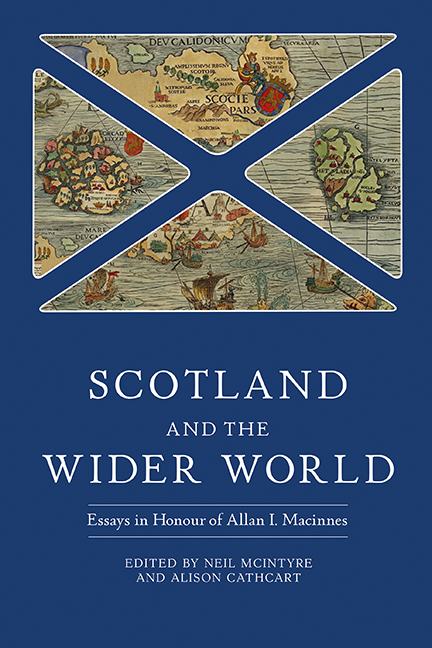Book contents
- Frontmatter
- Contents
- List of Contributors
- Preface
- List of Abbreviations
- 1 Covenants, Clans and Unions in Context: Celebrating the Scholarship of Allan I. Macinnes
- Part I Peoples and Cultures in Britain and Ireland
- Part II War, Religion and the House of Stuart
- Part III Union, Empire and Enlightenment
- List of Publications
- Index
- Tabula Gratulatoria
- Studies in Early Modern Cultural, Political and Social History
12 - The Empire Strikes Back: Indian Influences on Land Legislation in Scotland and Ireland in the Late Nineteenth Century
Published online by Cambridge University Press: 26 May 2022
- Frontmatter
- Contents
- List of Contributors
- Preface
- List of Abbreviations
- 1 Covenants, Clans and Unions in Context: Celebrating the Scholarship of Allan I. Macinnes
- Part I Peoples and Cultures in Britain and Ireland
- Part II War, Religion and the House of Stuart
- Part III Union, Empire and Enlightenment
- List of Publications
- Index
- Tabula Gratulatoria
- Studies in Early Modern Cultural, Political and Social History
Summary
This essay emphasises that the Indian example was one of many forces that affected the construction of legislation such as the Irish Land Acts of 1870 and 1881 and the Scottish Crofters’ Act of 1886. These acts gave important, although limited, land rights to small tenants. These included compensation for improvements, fixity of tenure, fair rent and, in Ireland, the right to free sale of the tenancy. Other influences included the poverty produced by the agricultural crisis of the late 1870s and early 1880s, which resulted in near-famine conditions in the west of Ireland and in the Scottish Highlands. Organised agitation – in the form of the Irish National Land League, founded in Mayo in 1879, and the Highland Land Law Reform Associations, formed in 1882 and 1883 – also played a part. Parliamentary pressure applied by the Irish Parliamentary Party and the ‘Crofters’ Party’ in Scotland was also significant, although the importance of the latter should not be exaggerated. While protest was an important factor in the Irish and Scottish land legislation of the 1880s, events of an entirely different order were relevant in India. The shadow of the Rebellion of 1857 hung heavily over the deliberations of those interested in land reform in India in the succeeding decades. The impact of the events of 1857 was more profound, however, in that subsequent events, often of a much lower intensity, engendered an exaggerated response.
There was also a close interaction between Ireland and Scotland, regardless of common Indian influences. Further, the influence of India was not all in one direction, as different experiences and outlooks produced different ideas on how the Indian legacy operated. These points will be pursued by a brief examination of three individuals whose views demonstrate this diverse legacy: Lord Napier, a former governor of Madras who chaired an important Royal Commission into the grievances of the Scottish crofters in 1883–84; Sir George Campbell, who spent most of his career in India and who, on his return to Scotland, was elected as the Radical Liberal MP for the Kirkcaldy Burghs; and George Douglas Campbell, eighth duke of Argyll, a Highland landowner who served as secretary of state for India during Gladstone's first administration from 1868 to 1874, and who would almost certainly have been horrified to be bracketed with Napier and Sir George.
- Type
- Chapter
- Information
- Scotland and the Wider WorldEssays in Honour of Allan I. Macinnes, pp. 188 - 202Publisher: Boydell & BrewerPrint publication year: 2022

